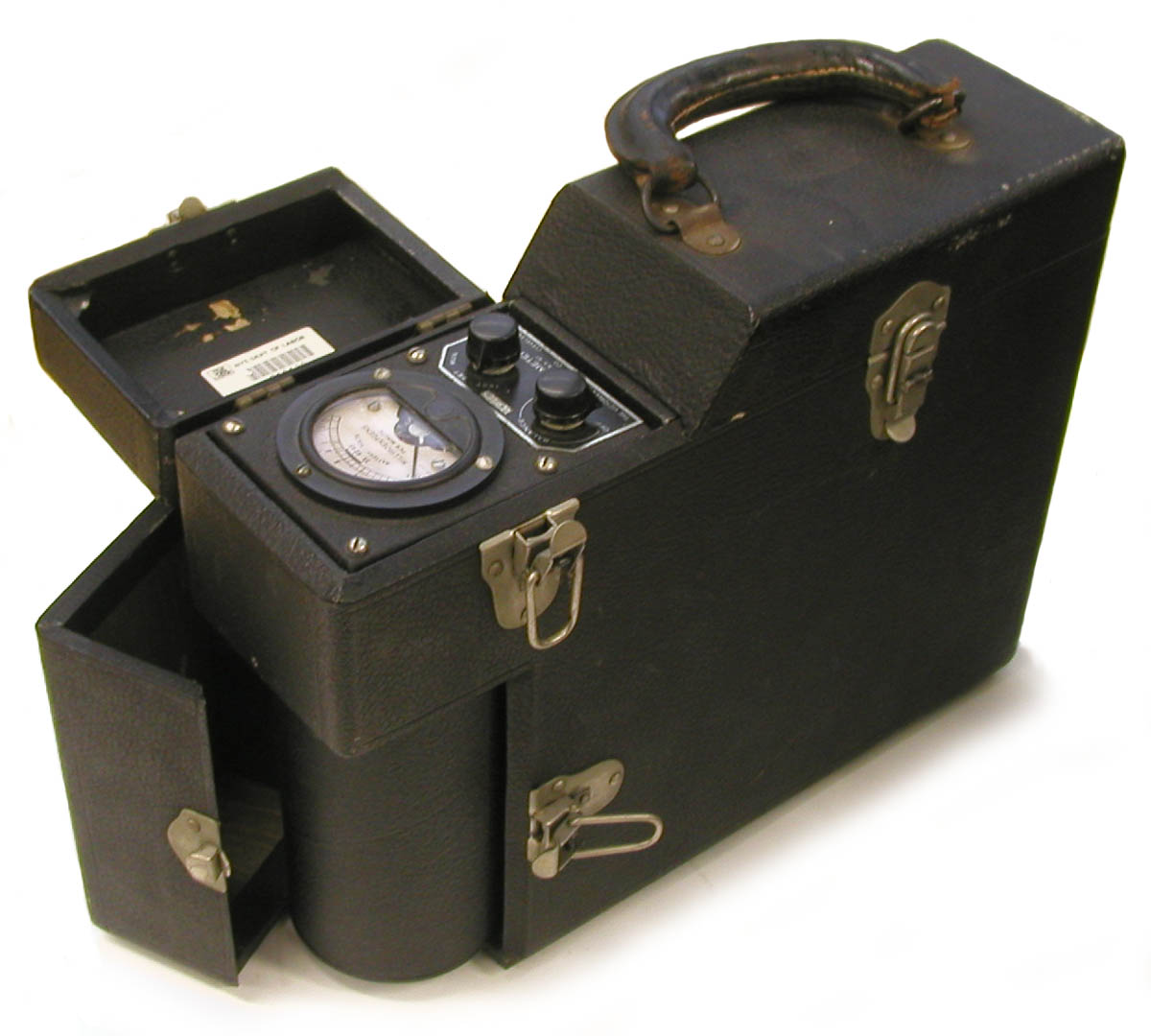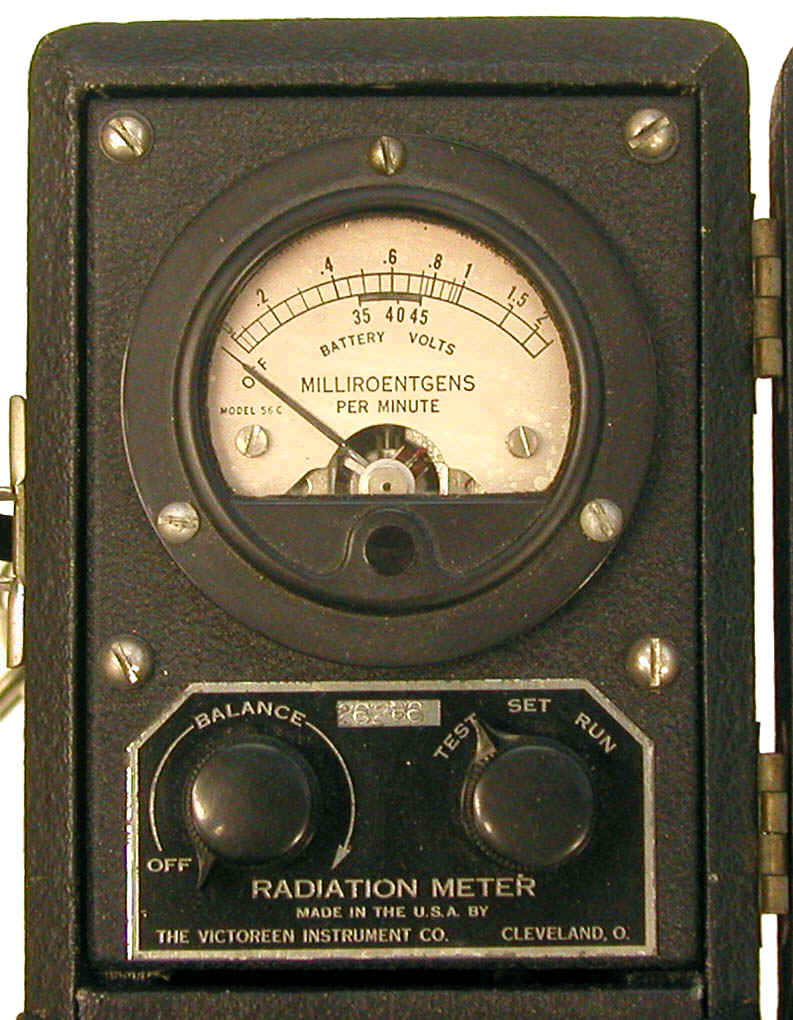First Commercially Available Survey Meter

This model, introduced by the Victoreen Instrument Company in the late 1930s, was probably the first commercially available survey instrument. This particular example probably dates from the early 1940s.
It has one scale: 0 to 2 milliroentgens per minute.
A cylindrical ion chamber (3" in diameter) is housed the bottom front portion of the black leatherette case (3.5” x 10” x 13”). In the photograph (above left), the hinged cover on this portion of the case has been opened so that the chamber is partially visible. During use, opening the cover would increase the chamber’s sensitivity for X-rays. In the other photograph (above right), the hinged top of the case has been opened so that the meter face, reading out in mR/hr, the switch, and zero adjust control can be seen. The battery is located in the back half of the unit.

Going into the late 1930s, the only available electrometer tube was the FP-54. This tube, and the 6-volt storage battery that it required, were too big to be employed in a truly portable survey instrument. The extremely small VX-41 electrometer tube which made this instrument possible was originally produced in the basement of a physics instructor at Northwestern University. In the book Health Physics: A Backward Glance (1980), the radiologist Dale Trout recalled the origin of the instrument as follows: “he gave me about 20 tubes... and I took these over to Cleveland, and John Victoreen and I met with George Bell and three of the other people around there stuck together what is, so far as I know, the first survey instrument... the ion chamber was made from a mailing tube that was “dagged.” The amplifier with the little Zenith tube in it was in one of the brass pill boxes that we used to buy pills... You know they’re about this big around (about 1-1/2 inch diameter) and had a paper lid. We pulled the paper lid out, put an insulator in there, and ran an electrode down the center of the chamber. The whole business ran off a “B” battery.” Trout continued, “As a result of some of this, Stafford Warren asked me to come to see him and bring the survey meter. This instrument ended up in the Manhattan District, as you might well imagine.
The two examples in the collection have no model number indicated, but according to a statement by Don Collins (Health Physics: A Backward Glance, 1980), who visited Dale Trout and Jack Victoreen during its development, it is the Model 241.
Battery: One 45-volt (Burgess #2308)
Donated by the State of New York.
References
- Dale Trout in “Health Physics: A Backward Glance.” ed. Kathren, R.L. and Ziemer, P.L., Pergamon Press, New York, 1980.
- Instruction Sheet for Victoreen Radiation Meter. No date.
